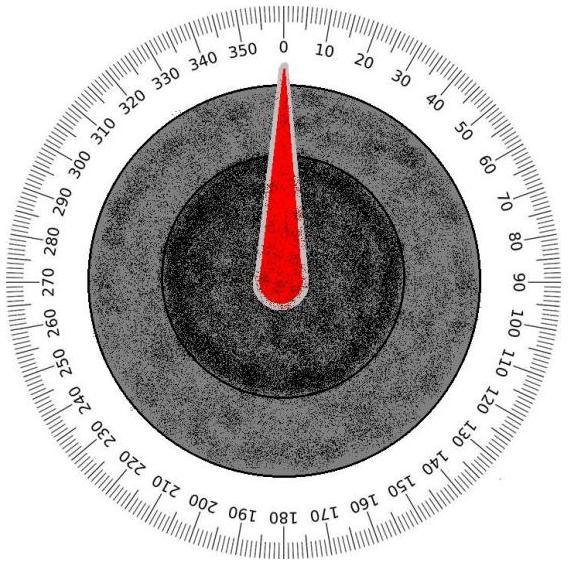Petr and a Combination Lock
Posted dealer
tags:
篇首语:本文由小常识网(cha138.com)小编为大家整理,主要介绍了Petr and a Combination Lock相关的知识,希望对你有一定的参考价值。
Petr has just bought a new car. He‘s just arrived at the most known Petersburg‘s petrol station to refuel it when he suddenly discovered that the petrol tank is secured with a combination lock! The lock has a scale of 360360 degrees and a pointer which initially points at zero:

Petr called his car dealer, who instructed him to rotate the lock‘s wheel exactly nn times. The ii-th rotation should be aiai degrees, either clockwise or counterclockwise, and after all nn rotations the pointer should again point at zero.
This confused Petr a little bit as he isn‘t sure which rotations should be done clockwise and which should be done counterclockwise. As there are many possible ways of rotating the lock, help him and find out whether there exists at least one, such that after all nn rotations the pointer will point at zero again.
The first line contains one integer nn (1≤n≤151≤n≤15) — the number of rotations.
Each of the following nn lines contains one integer aiai (1≤ai≤1801≤ai≤180) — the angle of the ii-th rotation in degrees.
If it is possible to do all the rotations so that the pointer will point at zero after all of them are performed, print a single word "YES". Otherwise, print "NO". Petr will probably buy a new car in this case.
You can print each letter in any case (upper or lower).
3 10 20 30
YES
3 10 10 10
NO
3 120 120 120
YES
In the first example, we can achieve our goal by applying the first and the second rotation clockwise, and performing the third rotation counterclockwise.
In the second example, it‘s impossible to perform the rotations in order to make the pointer point at zero in the end.
In the third example, Petr can do all three rotations clockwise. In this case, the whole wheel will be rotated by 360360 degrees clockwise and the pointer will point at zero again.
前 i 次旋转下,是否可以旋转到 j 度的位置,那么转移方程有:dp[i][j] = dp[ i - 1 ][ j - a[i] ] | dp[ i - 1 ][ j + a[i] ]
#include <iostream> #include <vector> #include <algorithm> #include <string> #include <set> #include <queue> #include <map> #include <sstream> #include <cstdio> #include <cstring> #include <numeric> #include <cmath> #include<unordered_set> #define ll long long using namespace std; int dir[4][2] = { {1,0},{-1,0},{0,1},{0,-1} }; int main() { int n; cin >> n; vector<int> a(n+1); for (int i = 1; i <= n; i++) cin >> a[i]; vector<vector<bool>> dp(16, vector<bool>(360)); dp[0][0] = true; for (int i = 1; i <= n; i++) { for (int j = 0; j < 360; j++) { if (dp[i - 1][(j - a[i] + 360) % 360]) dp[i][j] = true; if (dp[i - 1][(j + a[i] + 360) % 360]) dp[i][j] = true; } } cout << (dp[n][0] ? "YES" : "NO") << endl; //system("pause"); return 0; }
以上是关于Petr and a Combination Lock的主要内容,如果未能解决你的问题,请参考以下文章